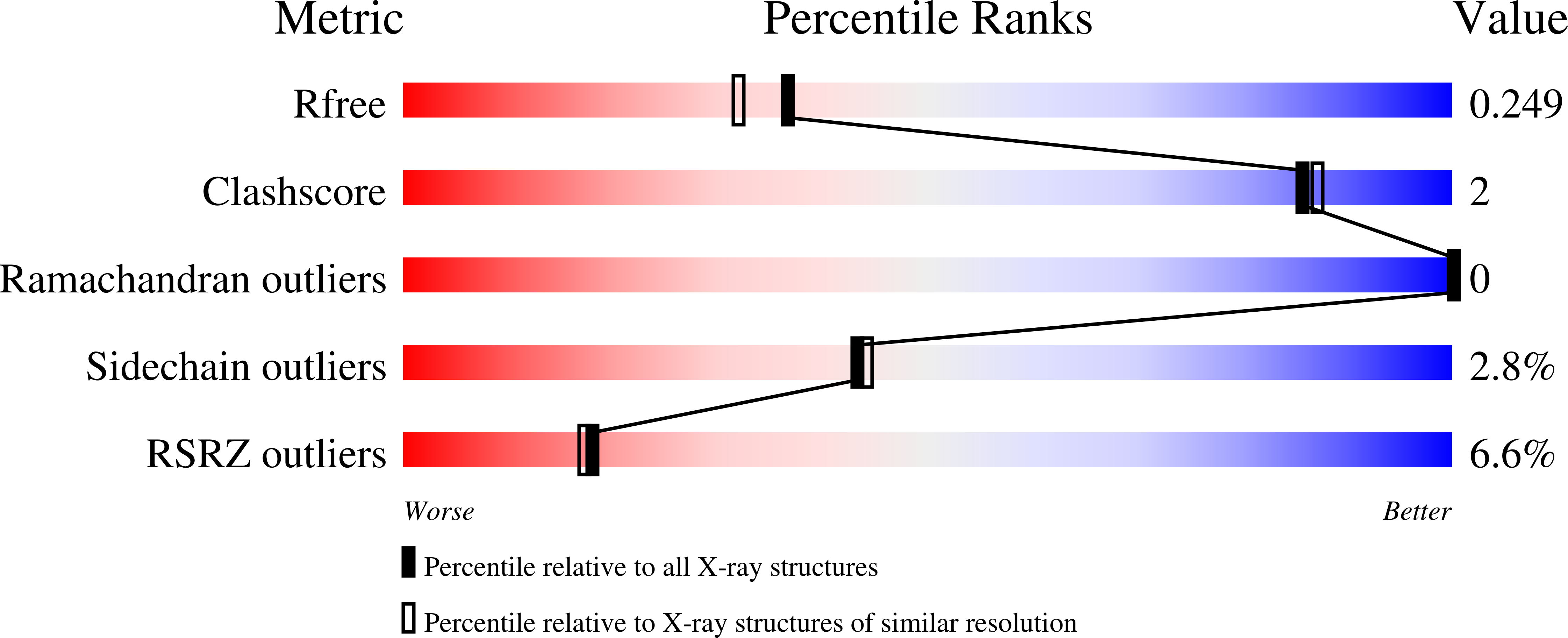Functional and Structural Characterization of a Novel HLA-DRB1*04:01-Restricted alpha-Enolase T Cell Epitope in Rheumatoid Arthritis.
Gerstner, C., Dubnovitsky, A., Sandin, C., Kozhukh, G., Uchtenhagen, H., James, E.A., Ronnelid, J., Ytterberg, A.J., Pieper, J., Reed, E., Tandre, C., Rieck, M., Zubarev, R.A., Ronnblom, L., Sandalova, T., Buckner, J.H., Achour, A., Malmstrom, V.(2016) Front Immunol 7: 494-494
- PubMed: 27895642
- DOI: https://doi.org/10.3389/fimmu.2016.00494
- Primary Citation of Related Structures:
5JLZ, 5LAX - PubMed Abstract:
Antibodies to citrullinated proteins, common in rheumatoid arthritis (RA) patients, are strongly associated to a specific set of HLA-DR alleles including HLA-DRB1*04:01, *04:04, and *01:01. Here, we first demonstrate that autoantibody levels toward the dominant citrullinated B cell epitope from α-enolase are significantly elevated in HLA-DRB1*04:01-positive RA patients. Furthermore, we identified α-enolase-derived T cell epitopes and demonstrated that native and citrullinated versions of several peptides bind with different affinities to HLA-DRB1*04:01, *04:04, and *01:01. The citrulline residues in the eight identified peptides are distributed throughout the entire length of the presented epitopes and more specifically, localized at peptide positions p-2, p2, p4, p6, p7, p10, and p11. Importantly, in contrast to its native version peptide 26 (TSKGLF R AAVPSGAS), the HLA-DRB1*04:01-restricted citrullinated peptide Cit26 (TSKGLF Cit AAVPSGAS) elicited significant functional T cell responses in primary cells from RA patients. Comparative analysis of the crystal structures of HLA-DRB1*04:01 in complex with peptide 26 or Cit26 demonstrated that the posttranslational modification did not alter the conformation of the peptide. And since citrullination is the only structural difference between the two complexes, this indicates that the neo-antigen Cit26 is recognized by T cells with high specificity to the citrulline residue.
Organizational Affiliation:
Rheumatology Unit, Department of Medicine Solna, Center for Molecular Medicine, Karolinska Institutet, Karolinska University Hospital , Stockholm , Sweden.























